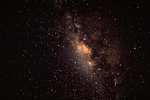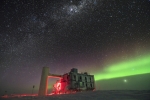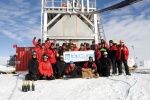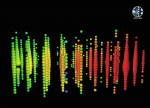Since cosmic rays were discovered in 1912, scientists have sought the origins of these mysterious particles. In September 2017, a flash of blue light in the ice deep beneath the South Pole set researchers on a path to resolving this century-old riddle.
After a five-year John Bahcall postdoctoral fellowship at WIPAC, astroparticle physicist Markus Ahlers returned to Europe in February 2017. Currently an assistant professor in the Theoretical Particle Physics and Cosmology research group at the Niels Bohr Institute in Copenhagen, Markus is now enjoying one of those dreams come true: the birth of his own research team. A Villum Young Investigator grant for 7.350.000 DDK ($1.2 million), which he was formally awarded on January 23, has secured the foundation of a new research group.
The American Physical Society meeting on astronomy, astrophysics, cosmology and particle physics, the so-called April meeting, closes today in Washington DC. The IceCube Collaboration has presented brand new results on neutrino oscillations that are comparable in precision to long-baseline neutrino experiments. From WIPAC, many PhD students and more senior staff presented results about IceCube, including the masterclass, along with results on CTA and Fermi.
IceCube data are stubbornly showing us only a glimpse of the extreme universe at a time. Ever since the discovery of a flux of TeV-PeV astrophysical neutrinos, scientists have been studying various potential sources of these neutrinos, and little by little, learning details about the composition of the cosmic neutrino flux.
Sorting through the billions of subatomic particles that zip through its frozen cubic-kilometer-sized detector each year, researchers using the IceCube Neutrino Observatory have gathered powerful new evidence in support of 2013 observations confirming the existence of cosmic neutrinos.








